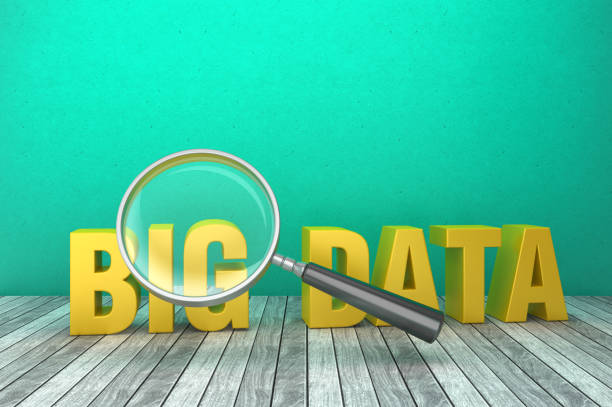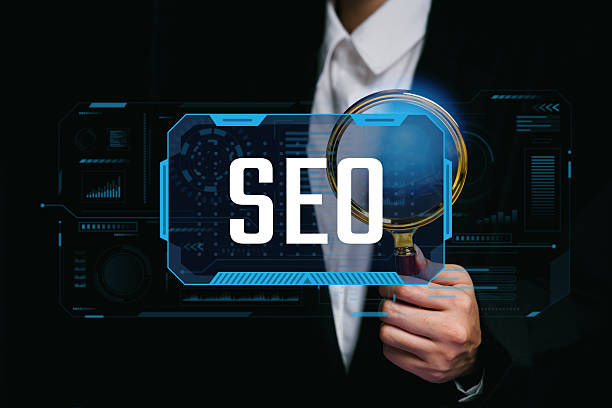What is On-Page SEO and Why is it Important?

On-Page SEO refers to the set of actions you take within your website to improve your site’s ranking in search engines like Google.
These actions include optimizing content, site structure, HTML tags, and other internal site factors.
The importance of on-page SEO lies in the fact that it helps search engines better understand the subject and content of your site, and as a result, display your site in higher rankings.
In fact, on-page SEO serves as a foundation for any successful SEO strategy.
Without strong on-page SEO, your efforts in Off-Page SEO will not be as effective.
By optimizing the internal factors of your site, you can provide a better user experience for visitors and attract more organic traffic to your site.
On-page SEO not only helps improve your site’s ranking but also increases user trust and credibility.
For example, using relevant keywords in titles, meta descriptions, and page content shows search engines what your site is about and helps users easily find the information they need.
Also, optimizing site loading speed, responsive design, and using a proper URL structure play an important role in improving on-page SEO.
Finally, on-page SEO is an ongoing process that needs to be reviewed and updated to keep up with changes in search engine algorithms.
Does your company’s website create a professional and lasting first impression on potential customers? Rasaweb, with professional corporate website design, not only represents your brand’s credibility but also opens a path for your business to grow.
✅ Create a powerful and trustworthy brand image
✅ Attract target customers and increase sales
⚡ Get free consultation
Keyword Research: A Foundation for Successful On-Page SEO

#Keyword research is one of the most important steps in on-page SEO.
Choosing appropriate keywords related to your site’s topic helps you optimize your content based on user needs and searches.
To start, you need to compile a list of keywords related to your business and services.
Then, using keyword research tools like Ahrefs Keywords Explorer, Google Keyword Planner, and Semrush, check the search volume, competition, and related keywords.
Choosing Long-Tail Keywords can also be an effective strategy.
These keywords usually have lower search volume but higher conversion rates because users know exactly what they are looking for.
For example, instead of the keyword “shoes,” use the keyword “buy men’s athletic shoes.”
After choosing the right keywords, you should use them naturally in your content.
Use keywords in titles, meta descriptions, main text, and image alt tags.
But keep in mind that overusing keywords (Keyword Stuffing) can negatively impact your site’s SEO.
Therefore, try to write your content naturally and fluently and incorporate keywords logically.
On-page SEO helps you find the best keywords and use them correctly.
Keyword research is an ongoing process.
By reviewing and analyzing search results and user behavior, you can update your keywords and keep your content optimized.
This helps you attract more organic traffic to your site and improve your site’s ranking in search engines.
With on-page SEO, you simplify competition in the online space. On-page SEO greatly helps improve your site.
Content Optimization: The Beating Heart of On-Page SEO

Content is king! This phrase has been repeated many times and is still true.
High-quality content that is valuable and relevant to users’ needs is one of the most important factors in on-page SEO.
Your content should answer users’ questions and needs and encourage them to stay longer on your site and visit other pages as well.
To optimize content, you should pay attention to the following:
Titles and Subheadings Attractive titles related to keywords help users and search engines easily understand the topic of the page.
Use H1 to H6 tags to organize content and place main keywords in the H1 title and subheadings.
Main Text Write your content clearly, fluently, and engagingly.
Use short sentences and readable paragraphs.
Incorporate keywords naturally in the text and avoid overuse.
Enrich your content with images, videos, and infographics.
Meta Descriptions The Meta Description is a summary of the page content that is displayed in search results.
An attractive meta description related to keywords encourages users to click on your site link.
The length of meta descriptions should be between 150 and 160 characters.
Image Alt Tags Image Alt Tags help search engines understand the content of images.
For each image, write a descriptive Alt Tag related to keywords.
Internal and External Links Internal Links help users and search engines find related pages on your site.
External Links to reputable and relevant sites help increase the credibility of your site.
Update your content regularly and add new and relevant information to it.
By optimizing content, you can provide a better user experience for visitors and attract more organic traffic to your site.
On-page SEO will be very useful in this way.
On-page SEO and high-quality content are directly related.
| Element | Description | Importance in SEO |
|---|---|---|
| Page Title | The main title displayed in the browser tab and search results. | Very High |
| Meta Description | A short summary of the page content displayed in search results. | High |
| Heading Tags (H1-H6) | Used to organize and structure content. | Medium |
| Main Text | The main content of the page, which should be valuable and relevant. | Very High |
| Image Alt Tags | Descriptions for images that help search engines understand. | Medium |
Optimized URL Structure: A Clear Path for Search Engines

A proper and optimized URL structure is another important factor in on-page SEO.
Clear, readable URLs related to the page content help search engines and users easily understand the topic of the page, and as a result, improve your site’s ranking.
To create optimized URLs, you should pay attention to the following:
Using Keywords Associate your URL with main keywords.
This shows search engines what your page is about.
Avoid using unnecessary numbers, symbols, and characters in your URL.
Keep your URL short and concise.
Long and complex URLs are difficult to remember and are less attractive in search results.
Using Hyphens Use hyphens (-) to separate words in the URL.
This makes your URL more readable and understandable.
Use lowercase letters in the URL.
This prevents potential problems when accessing the page.
Avoid creating duplicate URLs.
Each page should have its own unique URL.
Using a Hierarchical Structure Use a Hierarchical Structure to organize URLs.
This helps users and search engines easily understand the structure of your site and find related pages.
By creating optimized URLs, you can provide a better user experience for visitors and attract more organic traffic to your site.
With on-page SEO, you can organize your internet addresses.
On-page SEO helps your site be seen better
Tired of losing business opportunities due to not having a professional company website? Don’t worry anymore! With Rasaweb’s corporate website design services:
✅ The credibility and professionalism of your brand increase.
✅ You attract more customers and sales leads.
⚡ Get a free consultation to get started now!
Optimizing Site Loading Speed: A Critical Factor in On-Page SEO

Site loading speed is one of the most important factors in on-page SEO.
Users expect sites to load quickly, and if a site loads slowly, they are more likely to leave the site.
This can negatively impact your site’s ranking in search engines.
Google also places great importance on site loading speed and considers it one of the ranking factors.
To optimize site loading speed, you should pay attention to the following:
Optimizing Images Large and high-volume images can slow down site loading speed.
Compress your images using image optimization tools and reduce their volume.
Use appropriate image formats such as JPEG, PNG, and WebP.
Adjust the size of your images to match the display dimensions on the site.
Enabling Gzip Compression Gzip compression reduces the size of your site’s files and increases their loading speed.
Enable this feature in your server settings.
Using Caching Caching stores your site’s files in users’ browsers and loads your site faster on subsequent visits.
Use caching plugins like W3 Total Cache and WP Super Cache.
Reducing HTTP Requests Each time the browser needs to download a file from the server, an HTTP request is sent.
Reducing the number of HTTP requests can increase site loading speed.
Merge your CSS and JavaScript files and place them in a single file.
Use a CDN (Content Delivery Network) to host your site’s static files.
Optimizing Codes Optimize the HTML, CSS, and JavaScript codes of your site and remove unnecessary code.
Use code optimization tools such as Google PageSpeed Insights and GTmetrix to identify problems and provide optimization solutions.
By optimizing site loading speed, you can provide a better user experience for visitors and improve your site’s ranking in search engines.
On-page SEO helps optimize site loading
Responsive Design: Compatibility with All Devices

Responsive Design means designing a site that automatically adapts to the screen size of different devices (such as computers, tablets, and mobiles).
Given that most users today access the internet through mobile devices, having a responsive site is essential for on-page SEO.
Google also places great importance on responsive sites and displays them in higher rankings.
To create a responsive site, you should pay attention to the following:
Using Media Queries Media Queries allow you to define different CSS styles for different devices.
Using Media Queries, you can adjust the size of fonts, images, and other site elements based on the device screen size.
Using Grid System Grid System is a CSS framework that helps you design your site structure flexibly.
Using Grid System, you can adjust the columns and rows of your site to display correctly on different devices.
Using Responsive Images Responsive images are images whose size automatically adjusts to the device screen size.
Using the <picture> tag and the srcset attribute, you can define different images for different devices.
Testing the Site on Different Devices After designing the site, test it on different devices (such as computers, tablets, and mobiles) and make sure it displays correctly.
Use responsive testing tools like Google Mobile-Friendly Test.
By having a responsive site, you can provide a better user experience for visitors and improve your site’s ranking in search engines.
On-page SEO is one of the ways to have a responsive site.
On-page SEO and responsive design complement each other
Mobile Optimization: The Key to Success in Modern On-Page SEO

Given the increasing use of mobile phones to search the internet, optimizing your website for mobile is especially important.
Google prioritizes websites that are optimized for mobile and displays them higher in search results.
Therefore, if you want to succeed in on-page SEO, you must optimize your website for mobile.
To do this, you can use the following methods:
Using Responsive Design Responsive design allows your website to automatically adapt to the screen size of different devices (including mobile phones).
This is the best way to optimize your website for mobile.
Optimizing Loading Speed The loading speed of the website on mobile should be high.
Mobile users expect websites to load quickly, and if a website loads slowly, they are more likely to leave the website.
To increase the loading speed of the website on mobile, you can use various methods such as compressing images, enabling caching, and using a CDN.
Using Readable Fonts The fonts used on the website should be readable and clear on mobile.
Use fonts that are suitable for small screens.
Optimizing Navigation Website navigation on mobile should be easy and simple.
Mobile users should be able to easily navigate your website and find the information they need.
Using Large Buttons Website buttons on mobile should be large and touchable.
Mobile users should be able to easily click on the buttons.
By optimizing your website for mobile, you can provide a better user experience for mobile users and increase your website’s ranking in search results.
On-page SEO and mobile optimization are very important.
On-page SEO helps make the site mobile-friendly.
Schema Markup: A Common Language with Search Engines

Schema Markup is a code that allows you to provide more information about the content of your website to search engines.
Using Schema Markup, you can tell search engines what your page content is about, what type of information it contains, and what features it has.
This helps search engines better understand your website’s content and display it more prominently in search results.
For example, if you have a food recipe on your website, you can use Schema Markup to specify the name of the food, the ingredients, the recipe, and the cooking time.
This information helps search engines display your recipe in search results as a Rich Snippet.
To use Schema Markup, you can use the Schema.org website.
This site provides a collection of different Schema Markups that you can use for various types of content.
To add Schema Markup to your website, you can use SEO plugins like Yoast SEO and Rank Math.
These plugins allow you to easily add Schema Markup to your website pages.
By using Schema Markup, you can increase your website’s visibility in search results and attract more traffic to your website.
On-page SEO with schema markup goes a step further.
On-page SEO needs to optimize everything to achieve the best results.
| Schema Type | Description | Example |
|---|---|---|
| LocalBusiness | Local business information | Name, address, phone number, business hours |
| Product | Product information | Product name, description, price, image |
| Article | Article information | Article title, author, publication date |
| Recipe | Recipe information | Food name, ingredients, recipe |
| Event | Event information | Event name, date, venue |
Dissatisfied with the low conversion rate of visitors to customers on your online store?
Solve this problem forever with professional online store website design by Rasaweb!
✅ Increase the conversion rate of visitors to customers
✅ Create a great user experience and gain customer trust
⚡ Get a free consultation
Analysis and Measurement: The Key to Continuous Improvement of On-Page SEO

On-page SEO is an ongoing process, and to succeed in it, you must regularly analyze and measure your results.
By measuring your results, you can understand which strategies are effective and which strategies need to be changed.
To measure on-page SEO results, you can use various tools such as Google Analytics and Google Search Console.
Google Analytics provides you with information about website traffic, user behavior, and conversion rate.
Google Search Console provides you with information about website ranking in search results, keywords that users use to find your website, and website technical errors.
Using these tools, you can accurately check the performance of your on-page SEO and identify its strengths and weaknesses.
Based on this information, you can optimize your strategies and achieve better results.
For example, if you notice that your website traffic has increased through a specific keyword, you can focus more on that keyword and produce more content about it.
Also, if you notice that your website loading speed is low, you can take steps to increase the website loading speed.
By analyzing and measuring your results, you can continuously improve your on-page SEO and increase your website’s ranking in search results.
On-page SEO requires continuous review and evaluation.
On-page SEO helps improve site performance.
Common Mistakes in On-Page SEO and How to Avoid Them

In on-page SEO, there are mistakes that can damage your website’s ranking.
Avoiding these mistakes is very important for success in on-page SEO.
Some common mistakes in on-page SEO include:
Keyword Stuffing Overusing keywords in content can damage your website’s ranking.
Search engines identify this as a spam technique and penalize your website.
Duplicate Content Having duplicate content on the website can damage your website’s ranking.
Search engines cannot determine which version of the content should be displayed in search results and may penalize your website.
Ignoring Website Loading Speed Website loading speed is one of the important factors in SEO.
If your website loads slowly, users will leave your website, and this can damage your website’s ranking.
Not Optimizing Images Large and unoptimized images can slow down website loading speed.
Before uploading images to the website, optimize them and reduce their volume.
Ignoring Mobile Optimization Today, most users access the internet through mobile phones.
If your website is not optimized for mobile, you cannot attract much traffic to your website.
By avoiding these common mistakes, you can improve your on-page SEO and increase your website’s ranking in search results.
On-page SEO prevents these errors.
Take on-page SEO seriously.
Frequently Asked Questions
| Question | Answer |
|---|---|
| What is On-page SEO? | On-page SEO refers to the set of actions taken within the website and on the content of the pages to achieve a better ranking in search results. |
| Why is on-page SEO important for a website? | On-page SEO helps search engines better understand your page content and assess its importance. It also provides a better user experience for visitors. |
| What are the most important on-page SEO factors? | The most important factors include keyword optimization, content quality, Title Tag, Meta Description, URL structure, Heading tags (H1-H6), internal linking, and image optimization. |
| What role does the Title Tag play in on-page SEO? | The Title Tag is one of the most important on-page SEO factors that displays your page title in search results and the browser tab. It must contain the main keyword and be attractive. |
| What is the importance of Meta Description in on-page SEO? | The Meta Description provides a summary of the page content, and although it does not directly affect ranking, it can increase the click-through rate (CTR) by encouraging users to click. |
| How is the keyword used in on-page SEO? | Keywords are phrases that users use to search for information in search engines. Proper and natural use of them in content helps the search engine identify the topic of the page. |
| What is internal linking and what is its benefit in on-page SEO? | Internal linking means creating links between different pages of a website. This helps distribute page authority, helps search engine crawler bots, and improves user experience. |
| How does image optimization affect on-page SEO? | Image optimization includes compressing the volume, using an appropriate Alt tag, and proper file naming. This improves page loading speed and helps search engines understand the content of the image. |
| What does high-quality content mean in on-page SEO? | High-quality content means content that is comprehensive, accurate, unique, up-to-date, and user-friendly and meets the needs of users. |
| What role does the URL structure play in on-page SEO? | Readable, short URLs that include the main keyword help search engines and users have a better understanding of the page content and improve user experience. |
And other services of Rasa Web advertising agency in the field of advertising
Smart Sales Automation: A professional solution for digital branding with a focus on intelligent data analysis.
Smart Customer Journey Map: A fast and efficient solution for managing campaigns with a focus on custom programming.
Intelligent UI/UX: Designed for businesses looking to increase click-through rates through marketing automation.
Intelligent Conversion Rate Optimization: A professional solution for attracting customers with a focus on precise audience targeting.
Intelligent Digital Advertising: A novel service to increase click-through rates by optimizing key pages.
And more than a hundred other services in the field of internet advertising, advertising consulting, and organizational solutions
Internet Advertising | Advertising Strategy | Advertorial
Resources
Content Optimization: A Comprehensive Guide to Content SEO
,What is Internal SEO and why is it important? – How
,What is Internal Site SEO? Step-by-Step Internal SEO Training
,Internal SEO Training with these simple principles and method become the best SEO expert
? To shine your business in the digital world, Rasaweb Afarin is with you with its comprehensive services including Corporate Website Design, SEO and online marketing.
📍 Tehran, Mirdamad Street, next to the Central Bank, South Kazerun Alley, Ramin Alley No. 6



